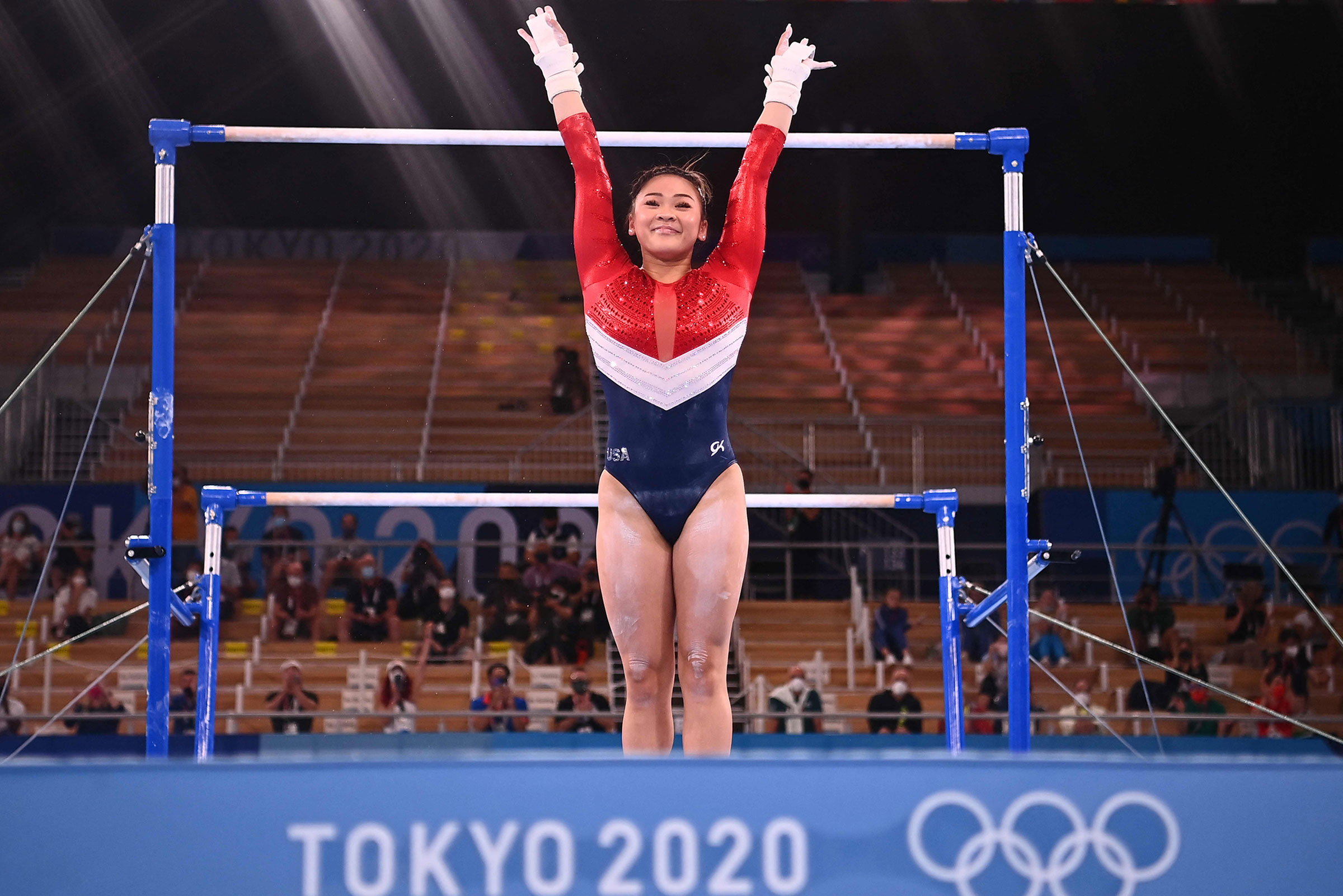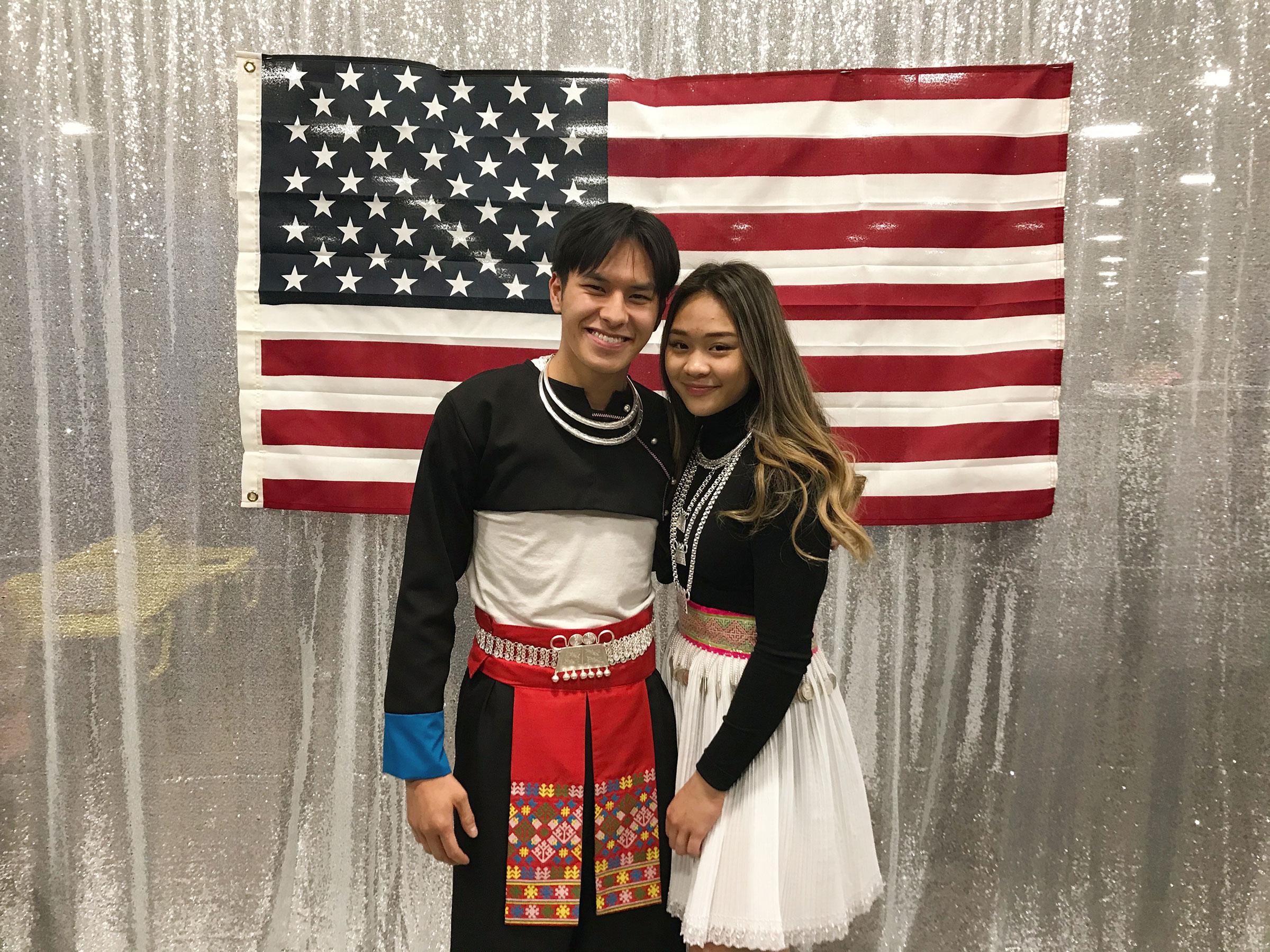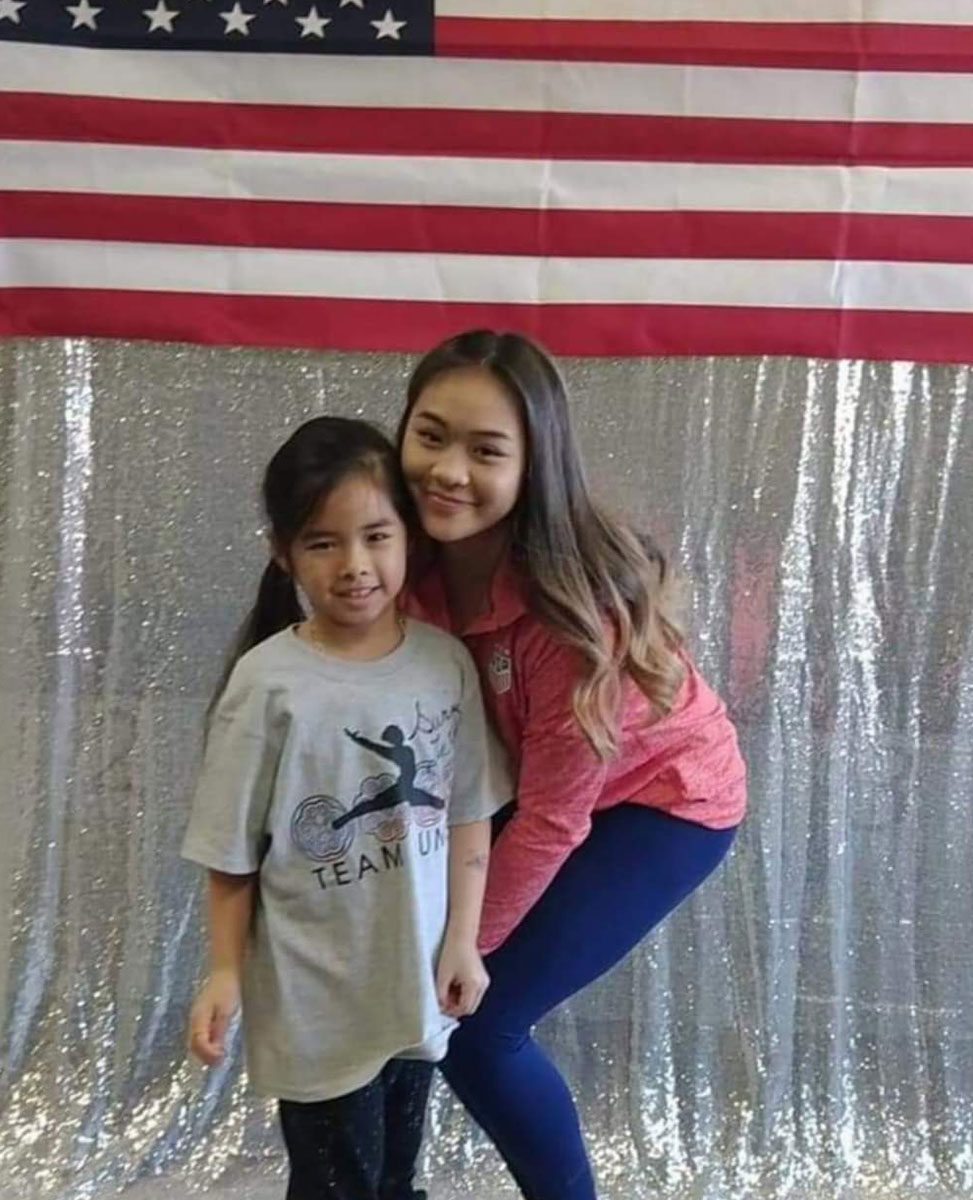In March 2019, a day before her 16th birthday and just over a year before the Olympic Trials were supposed to begin, Sunisa “Suni” Lee appeared on 3 Hmong TV, one of the most popular Hmong-language news shows in the Twin Cities.
Cushioned between her parents, John Lee and Yee Thoj, wearing her Team USA jacket, the newscaster asked, “Do you feel you have high potential to go to the Olympics?”
“Um, I think. I’m not really sure,” Lee says. Her father interrupts, “The important thing is that she has as much potential as anyone on the team.”
Now, two years later, Suni Lee is a singular talent in the world of gymnastics—poised to carry both the hopes of the United States and a community that has not always felt a part of it.
Lee is the youngest of six gymnasts representing the U.S. in Tokyo and the first Hmong-American to compete for Team USA. She has advanced to the finals in the all-around, beam and uneven bars events, where she will contend for medals on July 29, Aug. 1 and Aug. 3. On bars, Lee is favored to win an individual medal with a routine so packed with skills, viewers shouldn’t blink. Her routine earlier in Tokyo earned her a score of 15.4, the highest anyone has received so far, and stepped up to lead Team USA to silver with an unexpected floor routine when teammate Simone Biles pulled out of competition.

A legacy of resilience
Lee is from St. Paul, Minn., where many Hmong families like her own resettled in the aftermath of the Vietnam War. After the ethnic group, which lives across Laos, China and Vietnam, was recruited by the CIA to fight in a covert military operation in Laos, now known as the Secret War, the Hmong population was subsequently abandoned when American troops withdrew from Vietnam. Initially denied asylum in the U.S. (unlike the Vietnamese and Cambodians), many Hmong families fled to safety in Thailand. In the late 70s, Hmong refugees eventually began relocating to the U.S. with communities concentrated in Minnesota, California and Wisconsin.
Read More: Sunisa Lee’s Incredible Journey to a Historic Olympic Gymnastics All-Around Gold Medal
Four decades after the Hmong escaped persecution, the Twin Cities has become the largest urban center of Hmong life. Still, without targeted government services, nearly 60% of Hmong Americans are low-income, and more than a quarter live in poverty. As the first generation of Hmong-Americans born in the U.S. has come of age—the oldest is currently 45—many wear the mantle of being first. Lee is by far the highest-profile athlete—and arguably, thanks to the spotlight of Olympic gymnastics, the biggest star yet.
It’s hard to pinpoint exactly when Suni Lee became a household name within the diaspora. Perhaps it was in 2019 when she finished second at US Nationals right behind Biles, or maybe it was later that year when she won her first of three world championship medals. No matter, one thing is clear: her name is a unifying force in her community.

“When people of different generations who don’t necessarily pay attention to pop culture or sports start talking about it, it’s a big deal,” says Phillipe Thao, who first met Lee at the Twin Cities’ Hmong New Year in 2019. “I remember seeing a long line of people and wondering what it was for. Everyone was waiting to get a photo with Suni and donate money to her family.”
“Everybody knows Suni,” says Koua Yang, the Athletic Director at Como High School in St. Paul, who immigrated to the U.S. in 1980 during one of the first waves of Hmong refugees arriving stateside. “We get to celebrate as a community, as an ethnic group, one of ours, a shining star at the highest level.”
The cost of success
It’s exceptional to see this kind of investment in young women in particular, says Yang. “I’ve coached Hmong women for many years and I’ve had to beg their parents to let them play. For an athlete like Suni and her family to break out of that is incredible because it takes so much support.”
This feels especially true for people like Patsy Thayieng, a recent college graduate and a former gymnast. “You have to understand, this is a highly inaccessible sport, especially for communities like ours because it’s so expensive and time consuming,” she says.
Gymnastics has relatively high financial barriers compared to other sports. A parent can’t buy uneven bars or a vault for their backyard the way they can a soccer ball (though John Lee did build his daughter a makeshift balance beam when she was younger.) As an athlete becomes competitive, costs rise for travel, uniforms, and club memberships, often totaling thousands of dollars a year. For first generation refugees and their children, it’s often out of reach.
“That’s half the reason I get so emotional. I cry watching how beautiful her routines are. I cry understanding how much time and money her family must have put in to get her to the Olympics.”
With her community behind her
As for many immigrants, Western ideals of individualism often collide with the values at the heart of the Hmong experience: family and community—the urge to turn towards each other during times of catastrophe and celebration. These values are what make Lee’s story so instantly familiar. Televised flashes of her family during competitions are reminiscent of scenes from any Hmong household: restless younger siblings watching YouTube videos on their phones, fists full of food, a parent capturing a glorious moment on camera. And now that she’s in Tokyo, every cheer from back home rings even louder.
Of course, there are limitations to visibility, and the outsized success of an individual can feel incremental, but the ripple effects of having a Hmong Olympian are already starting to surface. Gaomong Xiong, Thayieng’s sister, is a junior in high school and on her school’s gymnastics team.
“Seeing Simone Biles and Sunisa spearhead Team USA is amazing. There was no representation anywhere until Sunisa Lee. It’s different because she’s Hmong, like me. She’s from St. Paul, like me. And so, I think this gives us and future generations a sense of hope.”
Suddenly, dreams of an Olympic stage—impossible a generation ago—no longer feel insurmountable. And those even younger than Xiong can sit comfortably in their optimism. Mor Chia Her’s daughter, Emma Nguyen, 7, has been in gymnastics since she was three years old.

“We started following Sunisa’s journey two years ago,” Her says. “Suni has been a great inspiration. My daughter is Hmong and Vietnamese. She’s excited to one day represent both ethnicities in the future Olympics.”
The years leading to Tokyo were marked by radical changes in Lee’s life: her father’s injury, which paralyzed him from the chest down the day before she left for US Nationals, the pandemic and a delayed Olympic games, a broken ankle. Through it all, she has not only persevered but soared, displaying the resilience that the Hmong people have been forced to demonstrate throughout their history.
“I know she’s doing it for her family and for us but I hope she’s doing it for herself too,” says Phillipe Thao.
“Our ancestors who never made it across the Mekong River, our parents and grandparents who struggled to make end’s meet—I hope she doesn’t think of those legacies as pressure but as the bridge to the Olympic stage, because the Hmong community is going to rally around her no matter what.”
Read more about the Tokyo Olympics:
More Must-Reads from TIME
- Why Trump’s Message Worked on Latino Men
- What Trump’s Win Could Mean for Housing
- The 100 Must-Read Books of 2024
- Sleep Doctors Share the 1 Tip That’s Changed Their Lives
- Column: Let’s Bring Back Romance
- What It’s Like to Have Long COVID As a Kid
- FX’s Say Nothing Is the Must-Watch Political Thriller of 2024
- Merle Bombardieri Is Helping People Make the Baby Decision
Contact us at letters@time.com